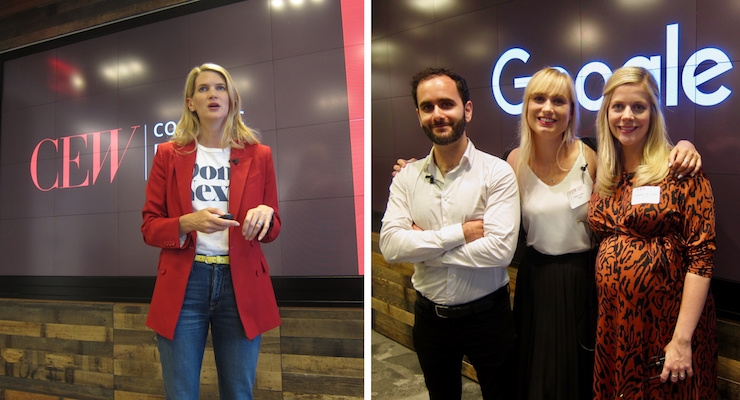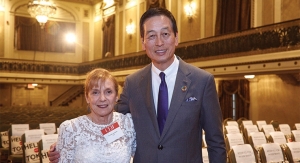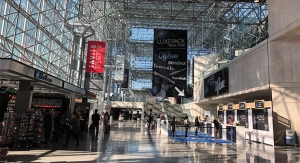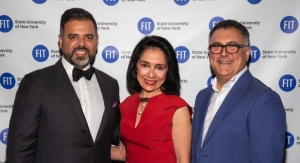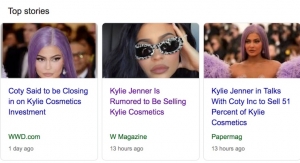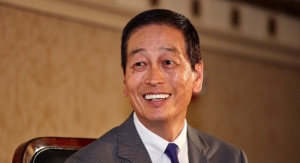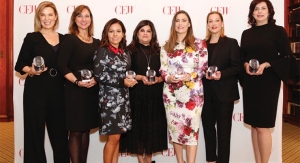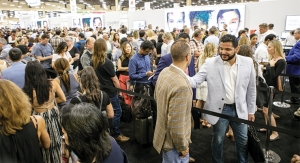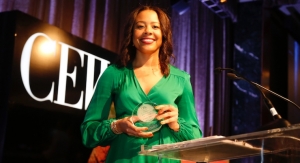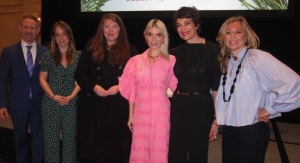Nancy Jeffries, Correspondent08.22.19
What does it take to delve into the psyche of today’s beauty consumer? How do beauty brands establish and maintain the right combination of in-depth analysis and ubiquity to uncover the deepest truths?
Google experts provided the answers at an event presented by Cosmetic Executive Women (CEW) and Google on July 17, at Boston Consulting (BCG) headquarters at Hudson Yards.
Sarah Willersdorf and Pierre Dupreelle, Partners and Managing Directors, BCG, opened the program with a look at the key themes driving growth in the beauty market today, with Willersdorf citing the following:
- Social Influences will continue to be key in driving sales
- Personalization and curation
- Health and wellness, including nutrition, wellness and beauty
- Multicultural brands and retailers
- Experience and engagement, including a big rise in try-on services
- Convenience perspective, emphasizing the frictionless experience
- Continued rise of digital and mobile growth
- Transformation of physical stores, including a major shift to dot coms, and consolidation of doors within department store channels
- Multichannel growth, with outreach into medical spas and subscription models
Dupreelle noted that across all age groups, replenishment and a treat for oneself are the top shopping triggers. He observed that 40% of consumers today plan to spend more on beauty products and adjacencies; and luxury has momentum across categories. “Online is capturing nearly half of spend across all age groups, with Amazon being the dominant channel,” said Dupreelle. He cited a big shift in the beauty category across generations, and strong sampling performance among all age groups.
Consumer Dynamics
As the beauty landscape continues to shift, marketers will clearly benefit by examining data that reveals the depths of consumer interest and motivation. Three experts from Google’s team shared their insights into the beauty consumer’s psyche and discussed ways to leverage the findings to help position a brand. Charlotte van der Smeede, Brand Lead, Google; Ariane Le Port, Insights Lead, Unskippable Labs, Google; and David Klingbeil, Global Insights Manager for Luxury and Beauty, Google, led the presentation.
Van der Smeede addressed the excitement and challenges facing beauty marketers today. “There are more products launched than ever, but there are also more tools to measure them,” she said. “Today’s consumer wants customization, but is also impatient. They expect instant gratification, free same day shipping, and real-time customer service and information. That’s very much the dynamic,” said van der Smeede. Noting the thousands of ads that reach consumers today, she emphasized consumer relevance as a key driver.
Ariane Le Port observed the expansion of data she has seen in her six years with Google. “Although it is daunting, we’ve never had the kind of information we have today,” she said. “Google data is unique because of its timing. It’s total and comprehensive, and with 250 million users, it’s an unprompted and balanced view,” she added. Citing a book called Everybody Lies, by social scientist Seth Stephens-Davidowitz, she noted that people tell things to Google that they wouldn’t tell anyone else, hence the storehouse of revealing data. Stephens-Davidowitz referred to big data as “digital truth serum,” ultimately valuable and engaging.
But finding the truth in searches is a process. Le Port described the social self, which she referred to as #ideal life; and the actual self-searches as #real life. She cited examples of searches in beauty, for example, where a consumer in #ideal life, described their eyebrows as ‘thick and lush’; while #real life searches revealed such characteristics as ‘thin eyebrows,’ and ‘not growing back.’ Le Port explained that “the tension between the ideal and the real, is where the truth lives.” Clearly, the treatment and products consumers sought for a solution would fall between the extremes.
Le Port shared that Gen Z has grown up on smartphones and they are the most diverse generation in history; 48% of Gen Z consumers are from diverse backgrounds and want their friends to be engaged in things they care about; 79% are saying that brands must actively demonstrate their understanding and share consumer concerns. Awareness, consideration, and then purchase are no longer the sole path to purchase. It’s now all about intent. “Intent beats identity and demographics don’t tell the whole story,” said Le Port.
She explained that today’s consumer is leaving a whole trail of data points behind, simply by the interest she has shown online. “All of this can be leveraged for beauty marketing strategy,” she said. “The only way to remove the guesswork in your marketing strategy is to know if someone has particular apps on their phone, or Google searches. These are intent signals,” she said. “Intent is everywhere and journeys are as unique as consumers, so it is key for brands to know where they are needed,” she said.
If a consumer is searching for hypoallergenic makeup, for example, she will look for products, seek out favorite You Tube videos, ingredients, and retailer locations on mobile. “Intent is redefining the marketing funnel,” said Le Port. Since many say they are discovering new products on You Tube, and 80% typically switch back and forth in their searches, marketers will need to be there every step of the way. Ultimately, explained Le Port, marketers should be able to understand, capture, and predict what consumers want. “By capturing consumers’ desires, you can elevate your storytelling and drive connection,” she said.
The Alchemy of Beauty Insights
According to David Klingbeil, “Insights are the new gold.” He highlighted the importance of diversity, elevating ingredients, and wellness in today’s beauty world, and stressed the new positioning of beauty today. “Google searches reveal that consumers are increasingly searching for multicultural beauty, and across markets and products. Trending queries extend from hair to skin care and makeup, and include specific questions regarding lipstick shades for dark skin tones, and specific skin care queries among Asian consumers,” he said.
“Representation clearly drives impact on You Tube, and showing multiculturalism in advertising drives impact as well,” said Klingbeil. In addition to multicultural growth, he cited the consumer preference for customization, as well as elevating ingredients with good benefits across regions and across beauty categories. While current ingredient favorites include collagen, biotin, Vitamin E, Aloe and CBD, he highlighted future opportunities with such ingredients as moringa, wild rose, and linalool, to consider for product development. Many brands, he said, are already including the trending ingredients, for example, Lancôme’s Energie with Vitamin E and Clinique Moisture Surge with Aloe water.
In addition to natural ingredients, there is also movement to scientific ingredients, explained Klingbeil. He also cited the current demand for products that are aligned with a consumer’s values, i.e., sustainability, ingredient sourcing, packaging, and cruelty-free. “Every dollar you spend or don’t spend is a vote you cast for the world you want,” he said.
Regarding packaging, he said the sustainability trend continues, and consumers are looking for products that are not only good for them, but good for the planet, hence the interest in environmentally friendly and recyclable packaging. van der Meede noted, however, that the appearance of some product names that are really lengthy on packaging, or written in French for example, may be difficult for consumers in different markets, and in this case the consumer may rely on the packaging that is identifiable by color, for ease of recognition and purchase.
Klingbeil demonstrated a strong correlation between beauty and wellness, fitness, nutrition, and yoga. “The data shows that beauty and wellness categories are also strongly correlated and prestige consumers are particularly into it. Prestige beauty consumers are 4 times more interested in fitness, hence the growth of athleisure beauty,” said Klingbeil, citing tarte Cosmetics as an example, for their makeup that “creates a no makeup look that lasts from gym to brunch.” Other brands offer mascara that is water-, heat-, and humidity-resistant, which he highlighted as characteristics that could be included in a brand’s marketing.
“Start to think like an alchemist and look at the popularity of words that are trending. Cover key words and territories in the media, show representation to drive impact in your creative, call-out ingredients in creative, experiment with content, and highlight wellness benefits. Take these factors into consideration in your product development,” said Klingbeil.
In conclusion, van der Smeede offered a number of Google tools to use in gathering beauty data, including: Google Trends, Think With Google (available by subscription), Consumer Barometer, You Tube Analytics, Google Analytics, Correlate, and Creative Playbook.

